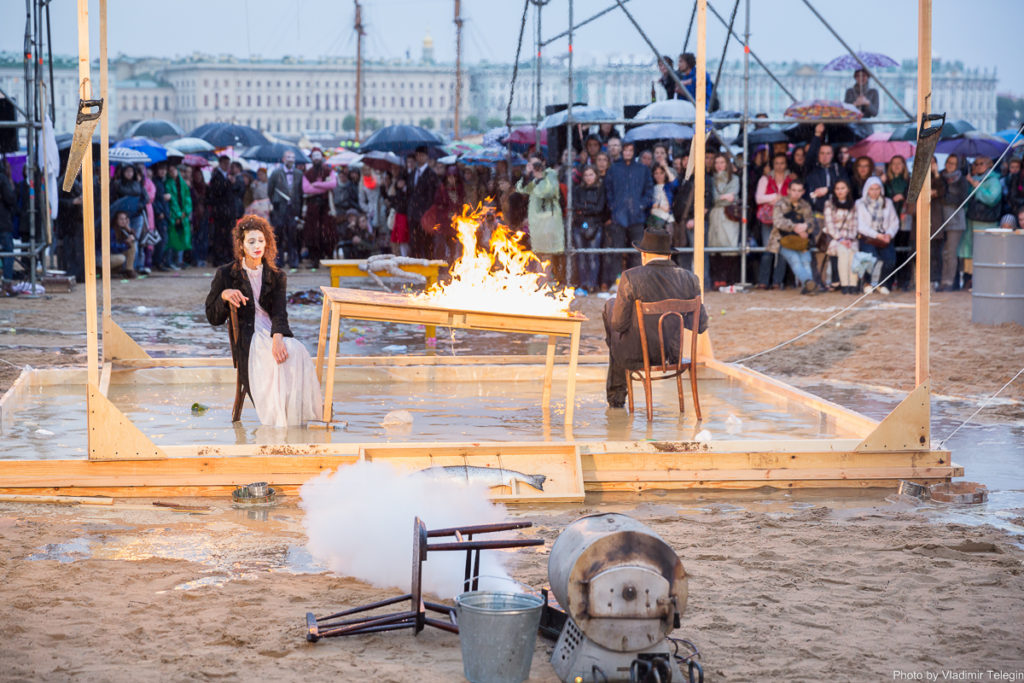


he potential of an object in theatre is inexhaustible: appearing on stage, it comes to life, becoming a metaphor, sign, or symbol, creating the atmosphere of the performance. In visual theatre, be it puppet theatre, street theatre, or theatre of the artist, an object is capable of not only being an independently acting character, but also of bringing an actor in compliance with its “demands”.
Widely developed in the West, in Russia theatre of the artist is represented only by a few names: AKHE Engineering Theatre, founded by artists Pavel Semchenko and Maxim Isayev in the 1990s, is one of the most notable.
AKHE members address the audience in the metaphorical language of visual images which demands associative co-participation. Their method is built on improvisational interaction with an object, which experiences various metamorphoses throughout the performance. Through the contact with an object, the characters convey their thoughts and emotions, and communicate with each other.
The allusive code of the Engineering Theatre is not subject to straightforward decoding: the endless number of meanings, being born out of virtuoso juggling with images, determines the unique artistry of AKHE language.